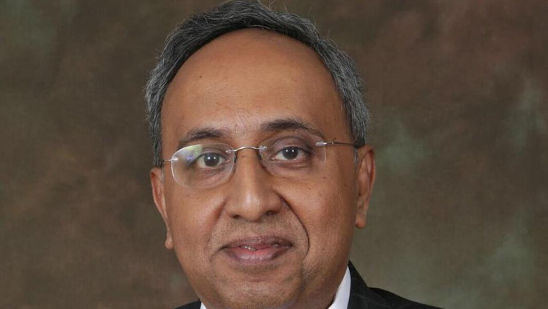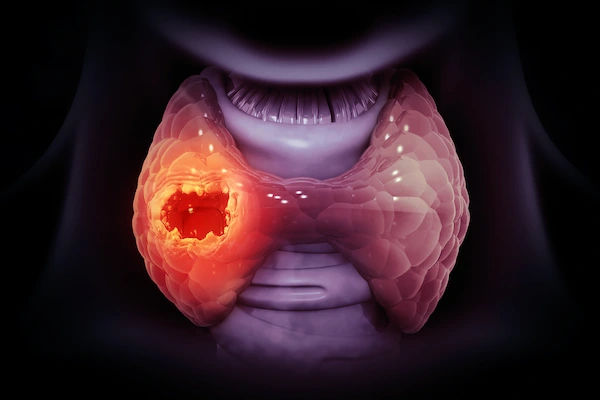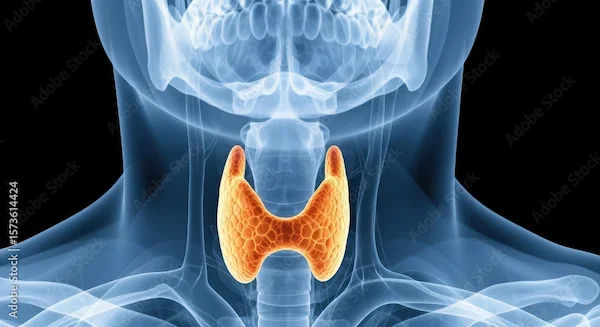Scarless Thyroidectomy: Your Guide to No-Neck-Scar Surgery
Explore scarless thyroidectomy, a no-neck-scar surgical option, including benefits, procedure details, and recovery tips for a smoother experience.


Introduction
If you've been told you need thyroid surgery, your mind might immediately jump to the prospect of a permanent, visible scar on your neck. For decades, that was the standard outcome. But today, medical advancements have made a "scarless" thyroidectomy a reality for many patients. This innovative approach, more accurately known as Remote-Access Thyroid Surgery, allows surgeons to remove part or all of the thyroid gland through incisions hidden in inconspicuous places like the armpit or the inner lip, leaving no mark on the neck. This article will serve as your definitive guide to understanding scarless thyroidectomy. We'll demystify how it works, explore the different techniques like TOETVA and TART, and help you determine if you're a candidate. More importantly, we'll look beyond the cosmetic benefits to discuss the real-life recovery process, potential risks, and the critical questions you should ask your surgeon to make an informed decision about your health.
What is a Scarless Thyroidectomy, Really?
A scarless thyroidectomy isn't a single procedure but a category of minimally invasive surgical techniques designed to access the thyroid gland without making an incision on the front of the neck. Instead, surgeons use small incisions in remote locations, through which they pass an endoscope (a thin, flexible tube with a camera) and specialised surgical instruments. The camera projects a magnified view of the thyroid and surrounding structures onto a monitor, allowing the surgeon to perform the operation with great precision.
Beyond the Name: How "Scarless" Differs from Traditional Surgery
The term "scarless" is slightly misleading; there are still incisions, and thus, scars. However, these scars are strategically hidden. In a traditional thyroidectomy, the incision is made in a natural skin crease on the lower neck, but it remains visible. In contrast, a transaxillary approach hides the scar in the natural fold of the armpit, while a transoral approach places tiny incisions inside the lower lip, leaving no external scars whatsoever. The fundamental difference lies in the surgical pathway, which requires a greater degree of technical skill and specialised training from the surgeon but offers a significant cosmetic advantage.
Am I a Candidate for a Scarless Thyroidectomy?
Not everyone is an ideal candidate for these advanced techniques. Eligibility depends on various factors related to your thyroid condition, anatomy, and overall health.
Ideal Conditions for a Scarless Approach
You may be a good candidate for a scarless thyroidectomy if:
- You have benign thyroid nodules or a small goitre.
- You require a thyroid lobectomy (removal of one lobe) rather than a total thyroidectomy.
- You have a diagnosis of low-risk thyroid cancer, such as papillary microcarcinoma.
- Your thyroid gland is not excessively large.
- You have a body type that allows for adequate working space (e.g., not a very narrow chest for the transaxillary approach).
- You have a strong personal desire to avoid a neck scar for cosmetic or professional reasons.
When a Traditional Thyroidectomy Might Be Safer
A surgeon might recommend a traditional approach for safety reasons if:
- The thyroid gland is very large (a condition called a large multinodular goitre).
- There is suspicion of locally advanced thyroid cancer that may have spread beyond the gland.
- You have had previous neck surgery or radiation, which can cause scar tissue.
- The patient has certain anatomical limitations that make remote access difficult or risky.
If you have symptoms like a rapidly growing nodule or voice changes, it's crucial to consult an expert. You can book a consultation with an endocrine surgeon online via Apollo24|7 to discuss your specific case and imaging results.
Consult an Endocrine Surgeon for the best advice
Exploring the Techniques: The Pathways to Your Thyroid
The two most common remote-access thyroid surgery techniques are the Transoral and Transaxillary approaches.
The Transoral Thyroidectomy (TOETVA): Through the Mouth
TOETVA is the only truly scarless technique because all incisions are made inside the mouth. The surgeon makes three small incisions: one in the lower lip and two in the inner gums. A tunnel is created down to the thyroid, and the surgery is performed endoscopically. The biggest advantage is the complete absence of any external scar. However, there is a small risk of temporary lower lip or chin numbness.
The Transaxillary Thyroidectomy (TART): Through the Armpit
In the TART approach, a single incision (typically 4-6 cm) is made in the natural crease of the armpit. The instruments are advanced across the chest to the neck, creating a working space to reach the thyroid. The scar is completely hidden when the arm is at rest. This approach offers excellent cosmetic results and avoids any dissection in the central neck area, which some studies suggest may lead to less post-operative swallowing discomfort.
Robotic-Assisted vs. Endoscopic: What's the Difference?
Both TOETVA and TART can be performed with either endoscopic instruments or with robotic assistance (like the da Vinci system). Robotic surgery provides the surgeon with a 3D high-definition view and wristed instruments that mimic the movement of the human hand, offering enhanced precision, especially in tight spaces. The choice between robotic and endoscopic often depends on the surgeon's training and preference, as both can yield excellent outcomes in skilled hands.
Weighing the Pros and Cons: Is Scarless Right for You?
Choosing a surgical approach is a balance of benefits and risks.
The Unmatched Benefits: More Than Just Cosmetic
- Superior Cosmetic Outcome: This is the primary driver. The hidden incisions provide immense psychological satisfaction.
- Reduced Neck Pain and Numbness: Since the surgery avoids cutting the neck muscles and nerves in the central neck, many patients report less post-operative pain and numbness in the neck area.
- Potential for Faster Recovery: While the overall recovery timeline is similar, the reduced neck trauma can make the initial recovery period more comfortable.
Understanding the Potential Risks and Limitations
- Specialised Skill Required: These are technically demanding procedures. It is crucial to choose a surgeon who is highly experienced and fellowship-trained in these specific techniques.
- Longer Operating Time: The setup and dissection to reach the thyroid remotely can make the surgery longer than a traditional approach.
- Unique Complication Risks: While the standard risks of thyroid surgery (voice changes, calcium levels) remain, there are unique risks like temporary mental nerve numbness (for TOETVA) or chest wall seromas (for TART).
- Higher Cost: The use of specialised equipment and longer operating times can make scarless thyroidectomy more expensive than traditional surgery.
The Patient Journey: From Consultation to Full Recovery
Every medical journey is unique, and understanding each step can help you feel more confident and prepared.
What to Expect During the Procedure
You will be under general anaesthesia. The surgical team will prepare the incision site (armpit or mouth) and create the pathway to the thyroid. The surgeon will then carefully identify and preserve the recurrent laryngeal nerves (which control your voice) and the parathyroid glands (which control calcium levels) before removing the targeted portion of the thyroid. The procedure typically takes 2-4 hours.
The Recovery Timeline: Day by Day and Week by Week
- Day 1: You will likely stay in the hospital overnight for monitoring. You may have a drain from the incision site. Pain is manageable with medication.
- Week 1: The drain is usually removed before discharge. You should avoid strenuous activity but can walk and perform light duties. Swelling and bruising around the chest (for TART) or under the chin (for TOETVA) are common.
- Weeks 2-4: Most patients return to work and normal daily activities. Strenuous exercise and heavy lifting should still be avoided.
- Month 2-3: Full recovery is typically achieved. Incision sites will continue to fade. Follow-up blood tests to check thyroid hormone and calcium levels are essential. Apollo24|7 offers a convenient home collection for these tests, so you can monitor your levels without leaving home.
Get Your Health Assessed
Key Questions to Ask Your Surgeon
Before deciding, come prepared for your consultation. Essential questions include:
- How many of these specific procedures have you performed?
- Am a good candidate based on my thyroid condition and anatomy?
- What are your personal success and complication rates for this procedure?
- Which technique (TOETVA, TART, robotic) do you recommend for me and why?
- What is the planned recovery timeline compared to traditional surgery?
Conclusion
The development of scarless thyroidectomy techniques represents a significant leap forward in patient-centered surgical care. It acknowledges that for many, the emotional and psychological impact of a visible scar is a real concern. While it's not the right choice for everyone and requires a highly skilled surgeon, it offers a fantastic option for eligible patients seeking the best possible cosmetic outcome without compromising on safety or efficacy. The decision is deeply personal and should be made after a thorough discussion with a qualified endocrine surgeon who can assess your individual case. By understanding the procedures, benefits, and limitations, you can actively participate in your treatment plan and choose the path that aligns best with your health needs and personal values.
Consult an Endocrine Surgeon for the best advice
Consult an Endocrine Surgeon for the best advice
Dr Sumanth R
General Physician
2 Years • MBBS
Bengaluru
PRESTIGE SHANTHINIKETAN - SOCIETY CLINIC, Bengaluru

Dr. Sai Vishnupriya Vittal
Endocrine Surgeon
20 Years • MBBS, DNB (Gen Surg), MRCS (Ed), FRCS, (Glasg), MCh (Endo Surg), FICS, FAIS, FAES
Chennai
Apollo Hospitals Greams Road, Chennai
(25+ Patients)

Dr. Muthukumar S
Endocrine Surgeon
16 Years • Mch
Madurai
Apollo Speciality Hospitals KK Nagar, Madurai
(25+ Patients)

Dr. B Sujeeth Kumar
Surgical Gastroenterologist
16 Years • MBBS, MS(General Surgery), FIAGES(Minimal Access Surgery), FAIS, FALS (Advanced Laparoscopic Colorectal Surgery), DIPMAS(Minimal Access Hernia Surgery), FICRS (Robotic Surgery)
Manikonda Jagir
Apollo Clinic, Manikonda, Manikonda Jagir

Dr. Sai Krishna Vittal
Endocrine Surgeon
22 Years • MBBS, MS, DNB, FRCS(Ed),FRCS(Eng), FICS, FAES, FCSSL(Hon)
Chennai
Apollo Hospitals Greams Road, Chennai
Consult an Endocrine Surgeon for the best advice
Dr Sumanth R
General Physician
2 Years • MBBS
Bengaluru
PRESTIGE SHANTHINIKETAN - SOCIETY CLINIC, Bengaluru

Dr. Sai Vishnupriya Vittal
Endocrine Surgeon
20 Years • MBBS, DNB (Gen Surg), MRCS (Ed), FRCS, (Glasg), MCh (Endo Surg), FICS, FAIS, FAES
Chennai
Apollo Hospitals Greams Road, Chennai
(25+ Patients)

Dr. Muthukumar S
Endocrine Surgeon
16 Years • Mch
Madurai
Apollo Speciality Hospitals KK Nagar, Madurai
(25+ Patients)

Dr. B Sujeeth Kumar
Surgical Gastroenterologist
16 Years • MBBS, MS(General Surgery), FIAGES(Minimal Access Surgery), FAIS, FALS (Advanced Laparoscopic Colorectal Surgery), DIPMAS(Minimal Access Hernia Surgery), FICRS (Robotic Surgery)
Manikonda Jagir
Apollo Clinic, Manikonda, Manikonda Jagir

Dr. Sai Krishna Vittal
Endocrine Surgeon
22 Years • MBBS, MS, DNB, FRCS(Ed),FRCS(Eng), FICS, FAES, FCSSL(Hon)
Chennai
Apollo Hospitals Greams Road, Chennai
More articles from Thyroid Cancer
Frequently Asked Questions
Is a scarless thyroidectomy as safe as the traditional method?
In the hands of an experienced surgeon, yes. The core principles of safely removing the thyroid while protecting the vocal cord nerves and parathyroid glands remain the same. The safety profile is comparable when performed on appropriately selected patients.
What is the typical cost of a transoral thyroidectomy in India?
The cost of a scarless thyroidectomy can vary significantly based on the city, hospital facility, surgeon's fee, and whether robotics are used. It is generally more expensive than traditional surgery, often ranging from 20% to 50% higher. It's best to get a detailed quotation from your chosen hospital.
Will I need to take thyroid medication after a scarless thyroidectomy?
This depends on how much of the thyroid is removed. If only one lobe is removed (lobectomy), the remaining lobe may produce enough hormones, and you might not need medication. If the entire gland is removed (total thyroidectomy), you will require lifelong thyroid hormone replacement therapy.
How long does the numbness in the chin last after a TOETVA procedure?
Temporary numbness in the lower lip and chin is a known side effect of TOETVA due to the stretching of the mental nerve. For most patients, this sensation resolves completely within a few weeks to three months.
Can a scarless thyroidectomy be used for thyroid cancer?
Yes, for select cases of low-risk thyroid cancer, such as small papillary thyroid cancers. However, for larger or more aggressive cancers, a traditional open approach is often recommended to ensure complete removal and safe dissection of the central lymph nodes.






 (1).webp)